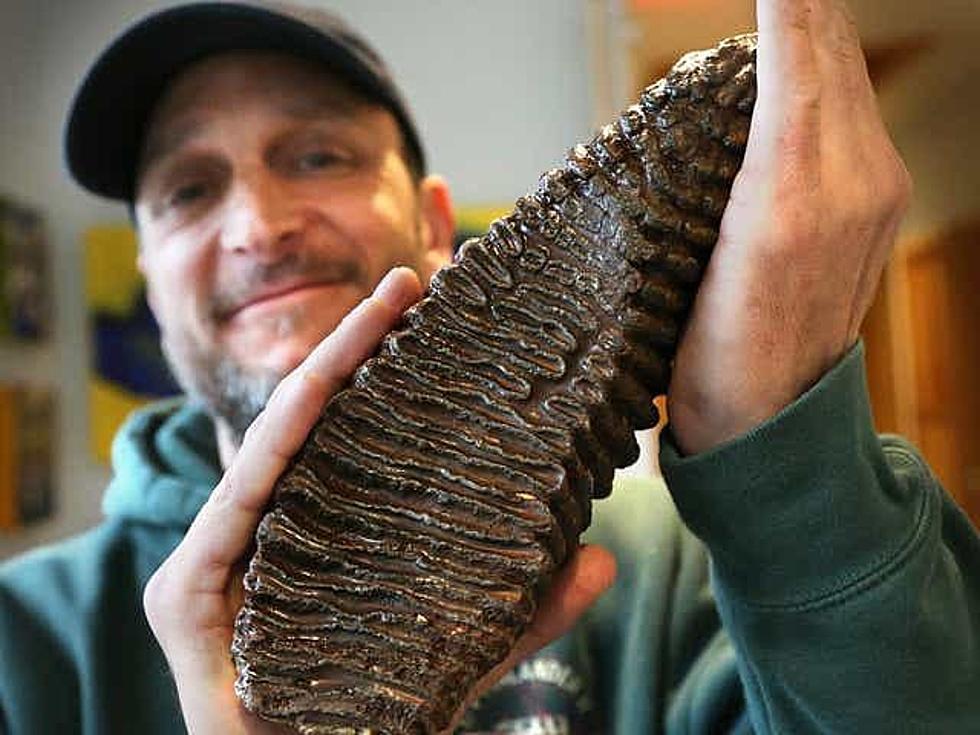
Want a Massive Woolly Mammoth Tooth? A Maine Fisherman Found One and Is Auctioning It Off
Can you imagine New England with Woolly Mammoths walking around Hampton Beach, climbing through the forests of the White Mountains, or taking over Story Land?
Seems a bit far-fetched, but not really.
For the past three months, geologists at the University of New Hampshire have been trying to identify an artifact found off the shore of Plum Island in Newburyport, Massachusetts.
According to NECN, the artifact has been identified as an 11-inch, 7-pound Woolly Mammoth tooth.
The tooth was found this past December by Captain Tim Rider while he was dredging for scallops, according to NECN. Captain Rider was used to digging up scallops; however, when he pulled a 12,000-year-old, incredibly well-preserved tooth, he was unsure what to do.
According to the New England Fishmongers, a Facebook group that catches and sells fish caught off the New Hampshire and Maine seacoast, the tooth is currently at Captain Rider's restaurant in Kittery, Maine.
Knowing people would be interested in purchasing this piece of pre-human history, Captain Rider decided to do something incredible - donate 100% of the proceeds to humanitarian efforts in Ukraine, according to NECN.
"I can't imagine what it is like for folks over there, so we found a charity that works with food, and our chefs know the chefs who started that," said Rider in the NECN article. "Obviously, I can't solve the world's problems as a fisherman, but I can contribute to help the people that are suffering,"
The organization handling the profits will be the World Central Kitchen, whose current mission is serving hot meals in Ukrainian cities and feeding those refugees fleeing the country.
The current bid, as of 2 PM Wednesday afternoon, is just under $5,000 on Ebay. The bidding will close Sunday in order to help those in Ukraine ASAP.

